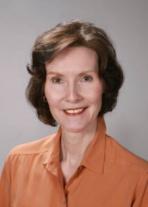SpringBoard, an official blogger for the 2017 National Genealogical Society (NGS) Family History Conference, is pleased to offer a review of this BCG Skillbuilding lecture, presented 11 May 2017.
T201, Nancy A. Peters, CG®, “Proving Identity and Kinship Using the GPS: Finding a Freedman’s Family”
By Scott M. Wilds, CG®
What do you get when you combine the challenges of resolving issues of identity and conflicting evidence with a fascinating case study and lessons in the GPS? A practically perfect talk by Nancy Peters, that’s what.
 Nancy A. Peters, CG
Nancy A. Peters, CG
Nancy addressed several elements of the GPS – reasonably exhaustive research, analysis and correlation, resolving conflicting information—in solving a challenging research question, the identity and origin in slavery of a freedman in Abbeville County, South Carolina. Students of African-American genealogy and southern families in general will be mesmerized by the case itself, but all genealogists will gain from Nancy’s research planning and execution, and application of the GPS to reach a credible conclusion.
Nancy showed how expanding research beyond the low hanging fruit of federal population schedules produced evidence critical to resolving questions of identity and relationship. South Carolina genealogists will appreciate and be reminded about the utility of state censuses and militia lists, as well as more obscure records like crop lien documents, found only in the county courthouse. The correlation of names across multiple record sets led to the sorting out of various men with the same name. Anyone who has tried to determine whether two people with the same name are actually one or two individuals, will benefit from seeing Nancy’s use of a table with cross tabs for record source and date, name, and identity elements.
This case study benefitted from Nancy’s deep understanding of the historical context for her subject, including, among other things, the possibility of multiple names for African Americans in the Reconstruction era, and the difference in records generated by men taking on crop liens for rent versus those to provide supplies for land they owned. Professor Harold Hill in The Music Man told us that “you gotta know the territory,” and Nancy showed us why it matters.
This presentation also reminds us that using the GPS can prevent us from taking the wrong path in our research. While reasonably exhaustive research will take us far from our computers, researching and understanding original records found at state and county archives and the courthouse will save us from making too hasty conclusions and errors. This presentation is highly recommended to all who are looking for an actual case study that demonstrates “how it’s done” and is an entertaining, well-told, and satisfying research story as well.
A recording of this lecture may be ordered from Playback Now www.playbackngs.com.
The words Certified Genealogist are a registered certification mark, and the designations CG, CGL, and Certified Genealogical Lecturer are service marks of the Board for Certification of Genealogists®, used under license by board certificants after periodic evaluation.
[/fusion_text][/fusion_builder_column][/fusion_builder_row][/fusion_builder_container]